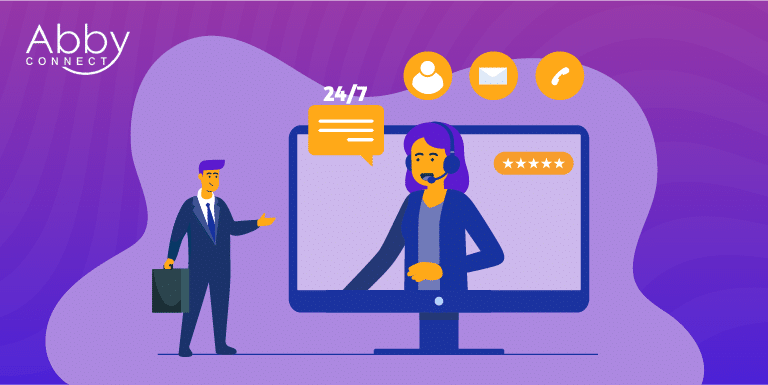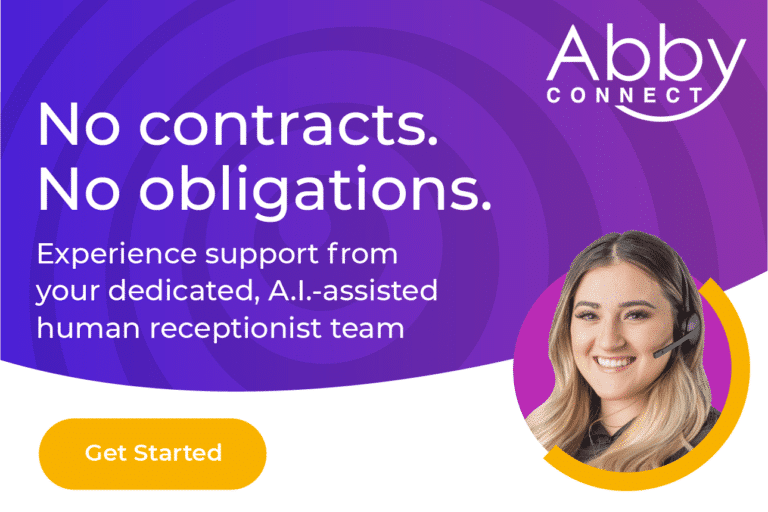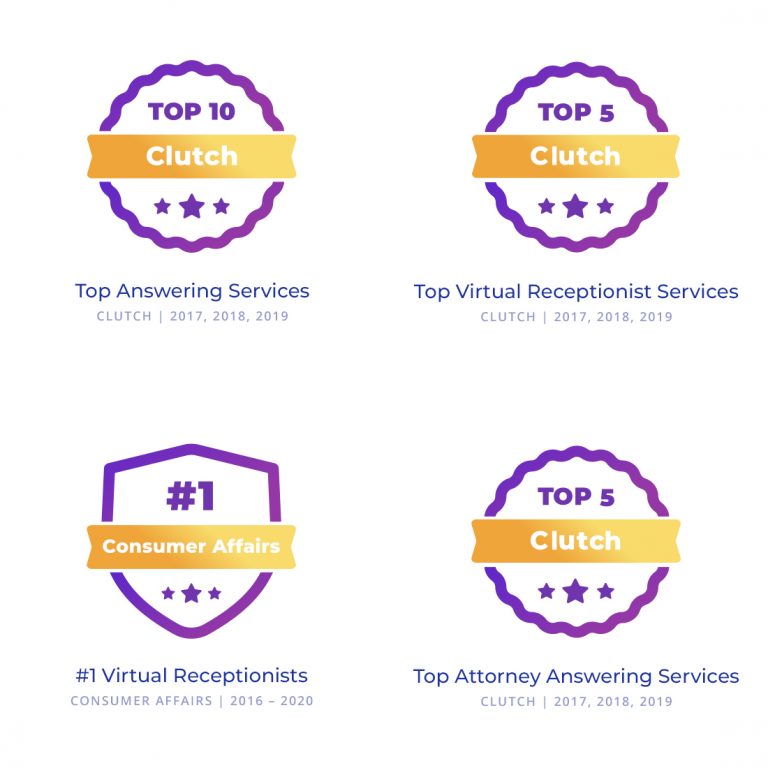
You know how there’s customer service, and then there’s really, really good customer service? It’s not just a matter of definition, but of what it actually means for you and your customers. Bad customer service experiences will scare your customers away for good. Decent customer service will just leave them feeling “meh.” But when you deliver excellent or high-quality customer service, that’s what makes customers want to come back for more and become your biggest fans.
According to Salesforce research, “89% of consumers are more likely to make another purchase after a positive customer service experience.” And Hubspot found that “93% of customers are likely to make repeat purchases with companies who offer excellent customer service.”
With this in mind, why wouldn’t you look at high-quality customer service and implement the tools (or bring in the professionals) to help you impress your customers every day?
Going Beyond to Not Only Meet, But Exceed Expectations
The four key ingredients of customer service are generally defined as the four Ps: promptness, politeness, professionalism, and personalization. Ensuring the four Ps are met will ensure a successful service interaction, but you can do better than that.
So, if you want to really knock it out of the park with customer service, you’ve got to do more than what’s expected. That means showing your customers that you respect their time, being upbeat and friendly, and always having the answers they need. It’s about going the extra mile and doing to make their day.
So, how do you deliver an exceptional customer experience? Following best practices will help you go above and beyond for your customers, and focus on delivering:
- Choices: don’t force square pegs into round holes. Provide at least a few alternatives to your customers to help them reach more successful outcomes and they feel you better understand their needs.
- Agility: exceptional customer service professionals are flexible, not rigid. If they need to bend a rule, or make an exception for a great customer or for an extenuating circumstance they do it. Adopting this practice builds a lot of customer loyalty and appreciation as they see you’re willing to work with them and not just go by the book.
- Collaboration: bring your customers in for their ideas, feedback, and assistance in creating solutions. Not only will you develop better, more impactful solutions, but they will feel their perspective is being considered and feel more ownership of the outcome.
- Speed: do you like waiting? Well, neither do your customers, especially when they have an issue, especially if that issue is negatively impacting something they care about and/or something they are using their hard earned money to pay for.
- Self-service: according to the Harvard Business Review, 81% of customers prefer to solve their own problem. So, give the people what they want, improve your customer service experience, and lighten your load at the same time – win/win!
- Proactive Support: The best customer service professionals don’t wait until there’s a problem, they prevent them from happening, or they find them before the customer does. Your customers have enough to worry about — relieve the burden by being proactive with your support. Your customers will happily pay to make their lives easier.
- Empowered Agents: exceptional customer service is not an equation or a flow chart, it is caring, intelligent individuals listening to a customer’s problem in detail and providing custom solutions that fit the customer and the situation. Allow your agents to say, “yes,” more than, “no,” and give them agency to make the best decision based on the need.
- Customer-centricity: while great customer service does not mean the customer is always right, it should be about the customer. It should consider, evaluate, and be defined by their needs and their situations.
- Individualized: superior customer care should be unique to each customer, and not only during a singular encounter with your business, but it should look at their entire experience with your company. Ideally, every interaction will be positive, but if a customer is reaching out a lot or has a particularly bad experience you’ll want to treat them differently than a customer who reaches out to answer a basic question.
The definition of a high-quality customer service experience depends on the customer. Some customers have very specific needs and will require a more formal support channel, while others may be able to handle a majority of their support issues on their own.
Stand out from the competition, retain more customers, and likely generate great reviews and even referrals!
High-Quality Customer Service from First Point of Contact
Your customer’s first point of contact is the person who answers the phone–be it a receptionist, sales agent, or maybe even you (which we don’t recommend).
Whoever is in charge of this initial interaction is also responsible for ensuring that all communication with your customers is top-notch. They set the tone for the entire customer experience. And, as we’ve already touched on, a great customer service experience is incredibly important. That’s why the person who answers the phone or chats with you online is the one who sets the tone for everything.
Up to 24% of customers who rated a first impression as “good” are “likely to stay loyal for up to two years”, whereas a bad impression leads to avoidance of that brand or product for the same amount of time,” according to a survey conducted by Dimensional Research.
Considering that almost two-thirds of new customers want to reach companies by phone and that 74% of consumers will choose a competitor after having a poor phone experience, can you afford to not have a high-quality customer service experience?
So, what’s the difference between an average customer interaction and an outstanding one?
Some examples:
An acceptable experience: a customer has a specific question about a product they’ve received. They go through a phone tree and land in a generic voicemail box where they leave a message. Someone gets back to them within 24 to 48 hours, and it takes 2-3 calls to solve their problem.
An excellent experience: A customer calls a friendly receptionist who answers promptly. That receptionist is empowered with FAQs and gathers information from the caller. If the question is simple, the receptionist handles it, and the caller can go on their way. If it’s more complicated or specific, the receptionist locates and forwards the caller to the person within the company who can best answer the question. The caller’s problem is solved all in one call.
Achieving High-Quality Customer Service at the First Point of Contact
No matter how it happens, that first conversation is vital. And it’s always better when it’s with a person (not a machine or bot)—whether that’s over the phone, via website chat, or even in person.
Zendesk’s expert definition of high-quality customer service suggests, “Supporting your support team means equipping them with the tools and processes they need to do their jobs well.”
Here’s how to achieve high customer satisfaction and deliver exceptional quality at your company’s first contact:
- Setup for Success and Speed: boost your response time and invest in agent training that sets your agents and receptionists up for success. Ensure your agents and receptionists know your products or services well and have full access to a robust knowledge base, FAQs, and the tools they need for easy follow-up.
- Equipped for Complexity: ensure your receptionists and agents know how to properly handle complex customer issues and ensure they hone their listening skills. Focusing on customer service, even with the most frustrated customer, will set your business apart.
- Empathy: train your receptionists and agents on empathy. It’s ok customer service to check all the boxes; it’s exceptional when you care for the customer, their situation, and the outcome and demonstrate genuine concern.
- Empower: ensure the face of the company—the receptionist or the initial responder to their chat software—can identify opportunities to go beyond what the customer needs and offer proactive solutions.
- Streamline: improve processes that slow things down. Getting tickets and issues to the right teams as quickly as possible is critical.
- Avoid Bots and Boxes: avoid providing impersonal experiences by not purchasing automated communication software and chatbots. Nobody enjoys interacting with a phone tree, automated chatbot, or voicemail box. When customers reach out, they hope to talk to a real person.
Don’t have the resources you need to provide a high-quality experience? Abby Connect can help!
With Abby Connect, you get a team of 5–10 dedicated receptionists who get to know your business and customers. They’ll answer, do intake, warm transfer, take messages, and even schedule appointments—all while sounding like they’re sitting at your office’s front desk.
Take your customers’ experience from frustrating to fantastic with Abby Connect. Get your free trial here or call (877) 303-5757 today and speak to us about how we can help your company elevate customer service!

